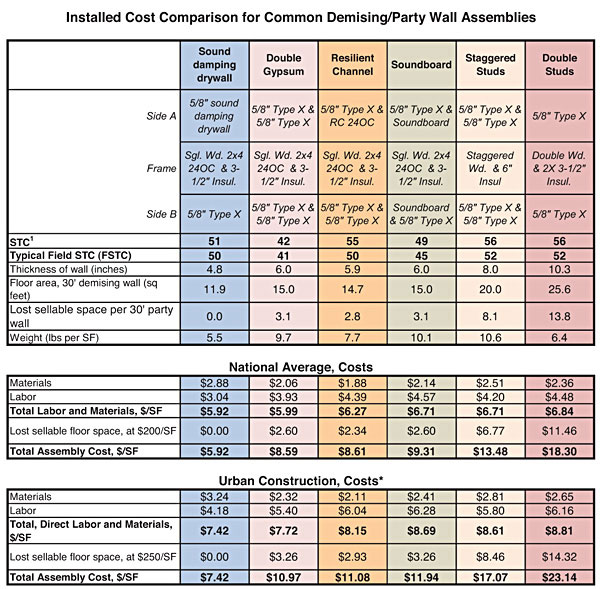Can You Hear Me? Optimizing Learning through Sustainable Acoustic Design
ANSI - RECOMMENDED STANDARDS
In response to ADA lawsuits that identified acoustics as a restriction for learning and driven by research that defined the learning thresholds, particularly for children as well as those with hearing disabilities, the Acoustical Society of America (ASA) convened a working group to create acoustic design standards for optimal learning environments. This collaborative effort resulted in the 2002 "American National Standard Institute (ANSI) Acoustical Performance Criteria, Design Requirements, and Guidelines for Schools - ANSI S12.60-2002." This voluntary standard was re-affirmed in May of 2009 and documents stringent standards that will ensure the best auditory enviroment, particularly for children.
The committee included members from specialties in engineering, architecture, bio-acoustics, noise, signal processing and speech communication to name just a few of the specialities represented in this broad consensus effort. The result was an affirmation that "good acoustical qualities are essential in classrooms and other learning spaces in which speech communication is an important part of the learning process. Excessive background noise or reverberation in such spaces interferes with speech communication and thus presents an acoustical barrier to learning. With good classroom acoustics, learning is easier, deeper, more sustained and less fatiguing."6
Up to 60 percent of all teaching occurs through communication through spoken language and learning depends on speech perception. Up to 15 percent of all children are estimated to have a slight hearing loss.7 The standard focuses on criteria for speech intelligibility in background noise and in reverberant environments in classroom studies. Research cited by this committee included studies in classrooms that linked scholastic achievement including test scores with the auditory learning environment.8
The committee recommended a 35 dBA acoustical performance criteria for steady classroom background noise levels assuming that the signal-to-noise ratio of at least +15 dB. In this instance, the signal to noise ratio (SNR) compares the level of intelligigible speech to the level of background noise and that can include everything in a classroom from sound traveling across partitions, to the hum of mechanical equipment, and to the sound of a classroom projector. The higher the SNR ratio the easier it is to hear and to understand the instructor.
When the standard was released in 2002, many professionals found that they were hard to accomplish in a typical classroom with mechanical systems and equipment designed to older acoustic standards. 35 dBA is quiet, so quiet that many schools were not designed to meet this standard.
CHPS, LEED® AND THE FUTURE
The goal of the Collaborative High Performance (CHPS) program a leader in setting school performance criteria is "to improve student performance and educational experience by building the best schools." In the latest CHPS Operations Report Card draft public review materials, they set the criteria for acceptable acoustical background noise at less than or equal to 35 dBA.9 However, higher values are listed as acceptable for sound insulation classroom to classrom and classroom to hallway.
Recommended reverberation times range from less than or equal to 0.6 sec in classrooms smaller than 10,000 cu.ft. to 0.7 sec in larger rooms. These recommendations are similar to the acoustic standards recommended by ANSI, which is beginning to be a mandated code in some states.
Manufacturers are continuing to develop new sound attenuating materials for the classroom to assure the best learning environments as documented by the ANSI S12.60-2002 standards. New materials and new technologies will allow designers to take command of customizing the design process, while engineering better environments for speech intelligibility. They will design places for expanded listening and learning.
 |
Advantages of sound damping drywall: Source: RSMeans Building Construction Cost Data, 66th Annual Edition 2008, for volume purchases Chart courtesy of Serious Materials. |
ENDNOTES |
1 http://www.meyersound.com/pdf/brochures/cs_zellerbach_b.pdf 2 http://www.chps.net/dev/Drupal/node 3 http://www.chps.net/content/044/CHPS_ORC_Public_Review_1_Materials.pdf 5 http://continuingeducation.construction.com/article.php?L=61&C=322&P=14 6 American National Standard (ANSI) Acoustical Performance Criteria, Design Requirements, and Guidelines for Schools ANSI S12.60-2002. 7 http://www.chps.net/dev/Drupal/node/120 8 A. L. Bronzaft, ‘‘The effect of a noise abatement program on reading ability'', J. Environmental Psychology, 1, 215-222 (1982). J.S. Lukas, ‘‘Noise, classroom behavior and third and sixth grade reading achievement'', Proceedings, 17th International Congress of Acoustics, Rome, Italy, (Sept. 2-7 2001). D.J. and MacKenzie, D.J and S. Airey, ‘‘Classroom acoustics, a research project'', Heroit-Watt Univ., Edinburgh, U.K. (1999). 9 http://www.chps.net/content/044/CHPS_ORC_Public_Review_1_Materials.pdf |








